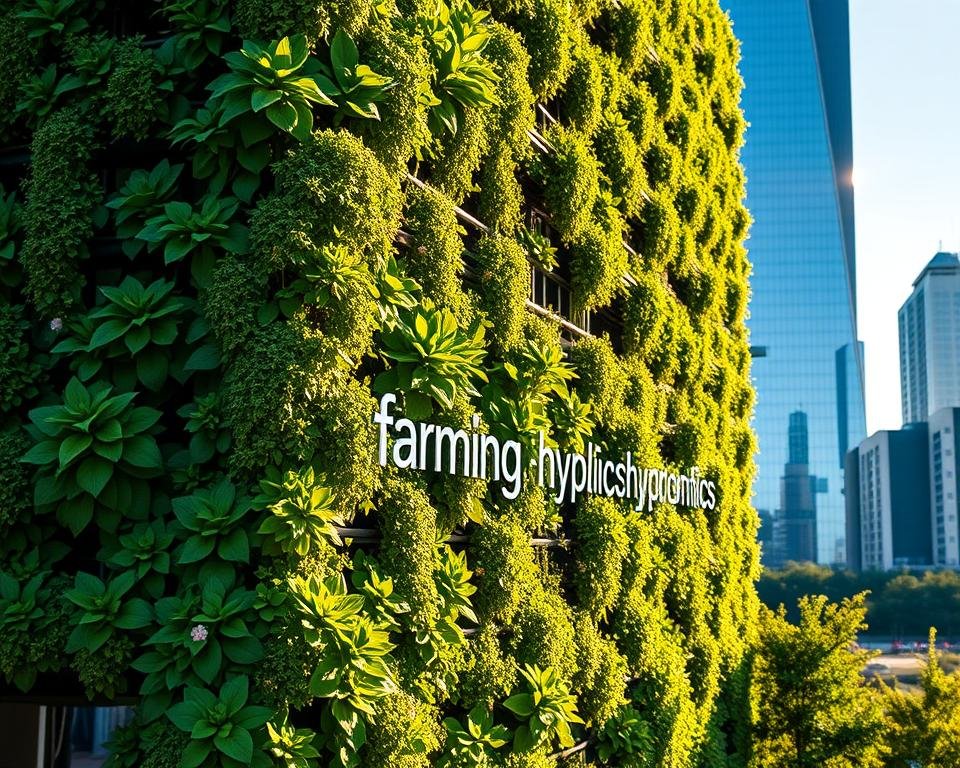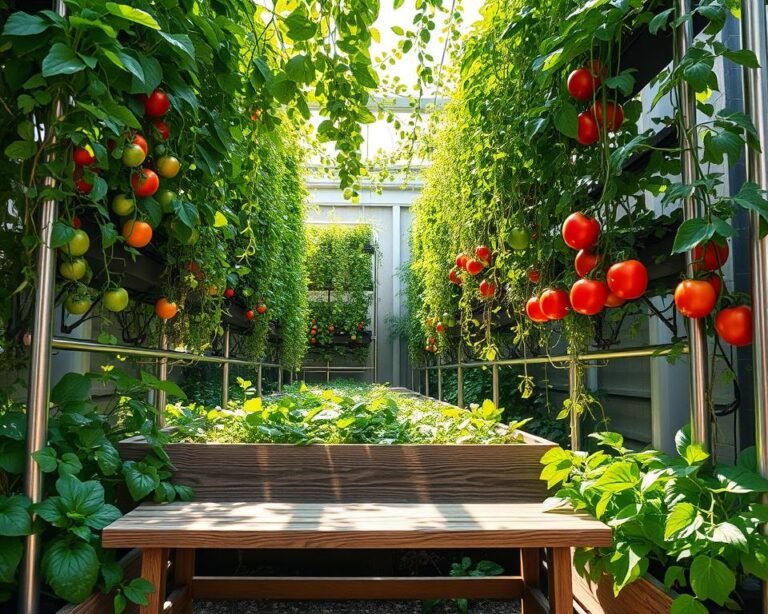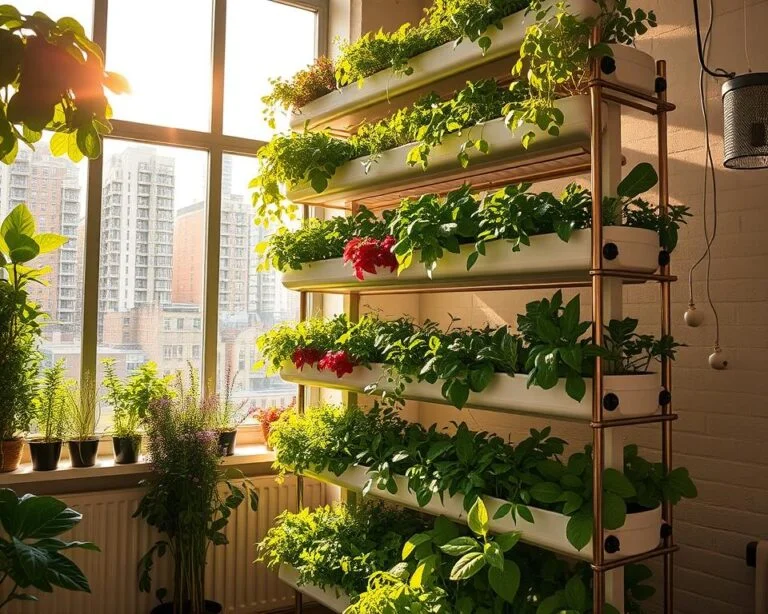How Vertical Gardens Improve Building Insulation
Imagine turning a city apartment into an energy‑saving oasis. As urban areas grow and green spaces shrink, vertical gardens have emerged as an innovative way to improve building insulation while adding natural beauty.
These living walls do more than decorate; they form an extra layer of building insulation that keeps interiors cooler in summer and warmer in winter. Iconic projects like Sydney’s One Central Park and Milan’s Bosco Verticale prove that vertical gardens can slash energy use and redefine sustainable architecture.
By acting as a natural thermal shield, vertical-gardens enhance building insulation, reduce HVAC demands, and make modern structures more efficient and eco‑friendly—a smart solution for greener, healthier urban living.
Key Takeaways
- Vertical gardens provide innovative building insulation solutions
- Urban areas can benefit from increased green spaces through living walls
- Energy efficiency improves with strategic vertical garden installation
- Thermal performance can be enhanced by up to 31.4% with living walls
- Vertical gardens contribute to reducing carbon dioxide emissions
Understanding Vertical Gardens and Their Components
Vertical-gardens are a new way to make buildings green. These green wall systems do more than look good. They also help buildings stay cool and improve the environment.
To get what vertical-gardens are about, start with their main parts. These systems use different parts to work well and last long.
Support Structure and Growing Medium
The base of a vertical garden is its support. Designers pick materials for strength and looks:
- Metal frames for strong support
- Light plastic for easy setup
- Wood for a natural feel
The growing medium is key for plants and keeping buildings cool. You can choose from:
- Soil-based systems for regular plants
- Hydroponic for saving water
- Felt for keeping moisture in
Irrigation Systems and Plant Selection
Good irrigation is vital for vertical-gardens. Systems with tubes and pumps give plants the right water. This keeps the garden healthy and effective.
Choosing plants is important. They should:
- Grow well in vertical spaces
- Help control temperature
- Need little care
Installation Requirements
Getting a vertical garden right needs a pro’s help. You must check if the building can handle it. This includes looking at weight and if changes are needed.
Building Insulation Through Living Walls
Vertical-gardens are changing how we think about keeping buildings cool. They create a living barrier that’s better than old insulation methods. This living system helps your building use less energy and stay comfortable.
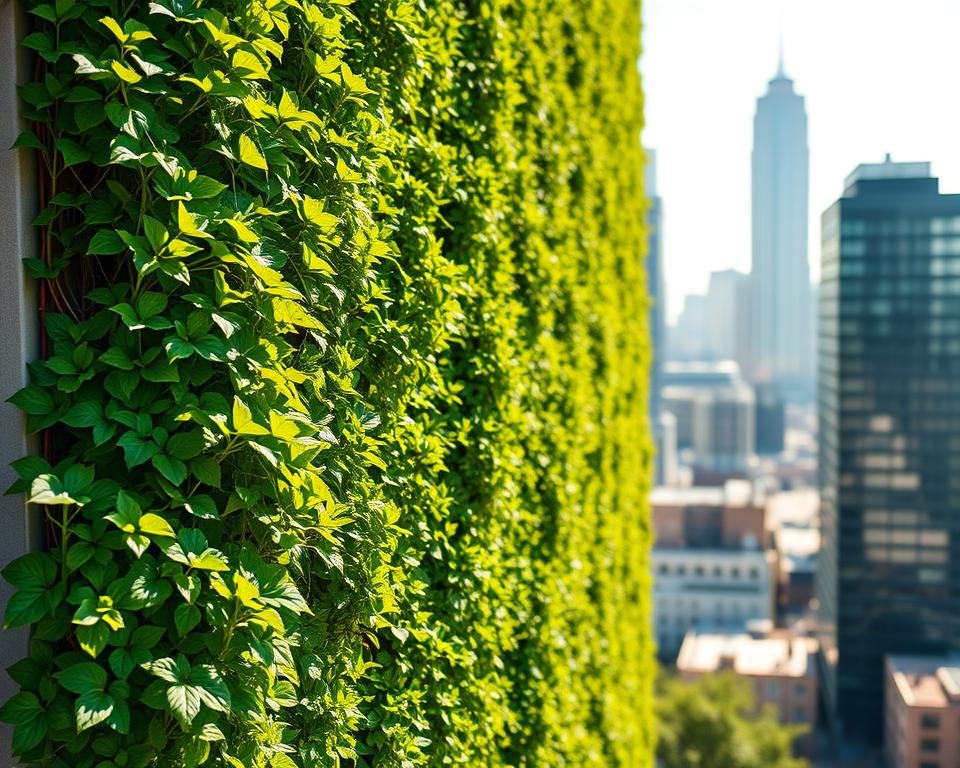
Thermal Resistance Insights
Vertical-gardens are great at keeping buildings cool. They use plants, soil, and air to block heat. Studies show they can:
- Reduce heat gains by up to 97% during summer months
- Lower internal wall temperatures by an average of 2.5°C
- Decrease heat losses by approximately 30%
Temperature Regulation Mechanisms
The insulation in vertical-gardens works in two ways:
- Summer Cooling: Plants shade and cool through evapotranspiration
- Winter Protection: Thick plants block cold air
Energy Efficiency Benefits
Adding vertical-gardens saves a lot of energy. A well-designed wall with 60% plants can make your building much cooler.
“Green walls are not just aesthetic solutions, but strategic energy management tools for modern architecture.” – Urban Green Design Experts
| Insulation Aspect | Performance Impact |
|---|---|
| Heat Gain Reduction | Up to 97% decrease |
| Temperature Stabilization | 2.5°C internal wall cooling |
| Energy Consumption | Potential 30% reduction |
Using vertical gardens improves your building’s energy use and keeps it dry. It’s a win for the planet and your wallet.
Environmental Impact and Sustainability
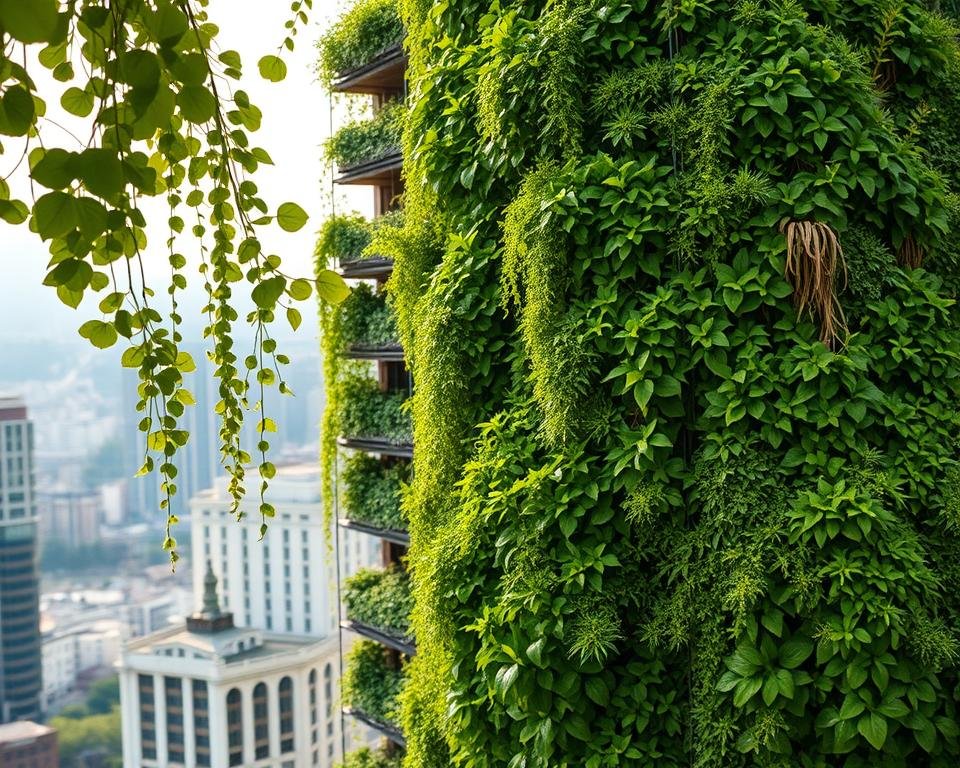
Vertical gardens are a key solution for making cities greener. They do more than look good; they turn buildings into green powerhouses. These living walls help our ecosystem in big ways.
Vertical gardens bring many benefits to urban areas. They:
- Clean the air by catching tiny particles
- Provide homes for plants and insects
- Help cool down cities
- Save energy for buildings
But vertical gardens are more than just pretty. They clean the air by removing pollutants. This makes the air better inside and outside buildings. Sustainable design principles make them a smart choice for cities.
Water use is also a big deal with vertical gardens. Smart watering systems save water and keep plants healthy. Choosing the right plants helps save water and cuts down on upkeep.
- Can cut energy use by up to 30%
- Help control temperature naturally
- Improve building insulation
- Support local wildlife
Adding vertical gardens to buildings is a step towards a greener city. They turn regular buildings into energy-saving, eco-friendly spaces. This helps protect our environment.
Cost Analysis and Return on Investment
Thinking about vertical garden insulation? The start-up costs can be quite high. Prices change based on the building’s size, how complex it is, and what design you want. But, the savings on energy over time can make up for the initial costs.
When figuring out the cost, consider a few things. Professional setups usually cost between $25 and $50 per square foot. More complicated systems might cost even more. For example, the Avant Building saw a 30% boost in efficiency, showing the financial gains of new insulation methods.
Energy savings are key to getting your money back. Many commercial buildings see a payback in 3-5 years. The Crosby Street Hotel, for example, saved about $57,000 a year by using less energy. This shows how much you can save with advanced insulation like vertical gardens.
There are also financial help options to consider. Groups like NYSERDA provide funding for energy-saving upgrades. By looking into these programs, you can lower the upfront costs and get to saving energy sooner.

